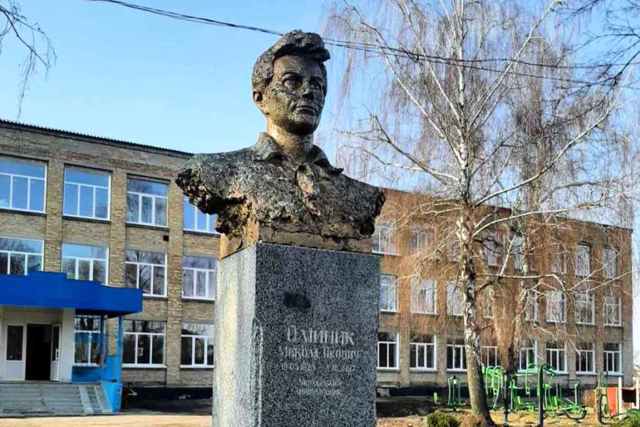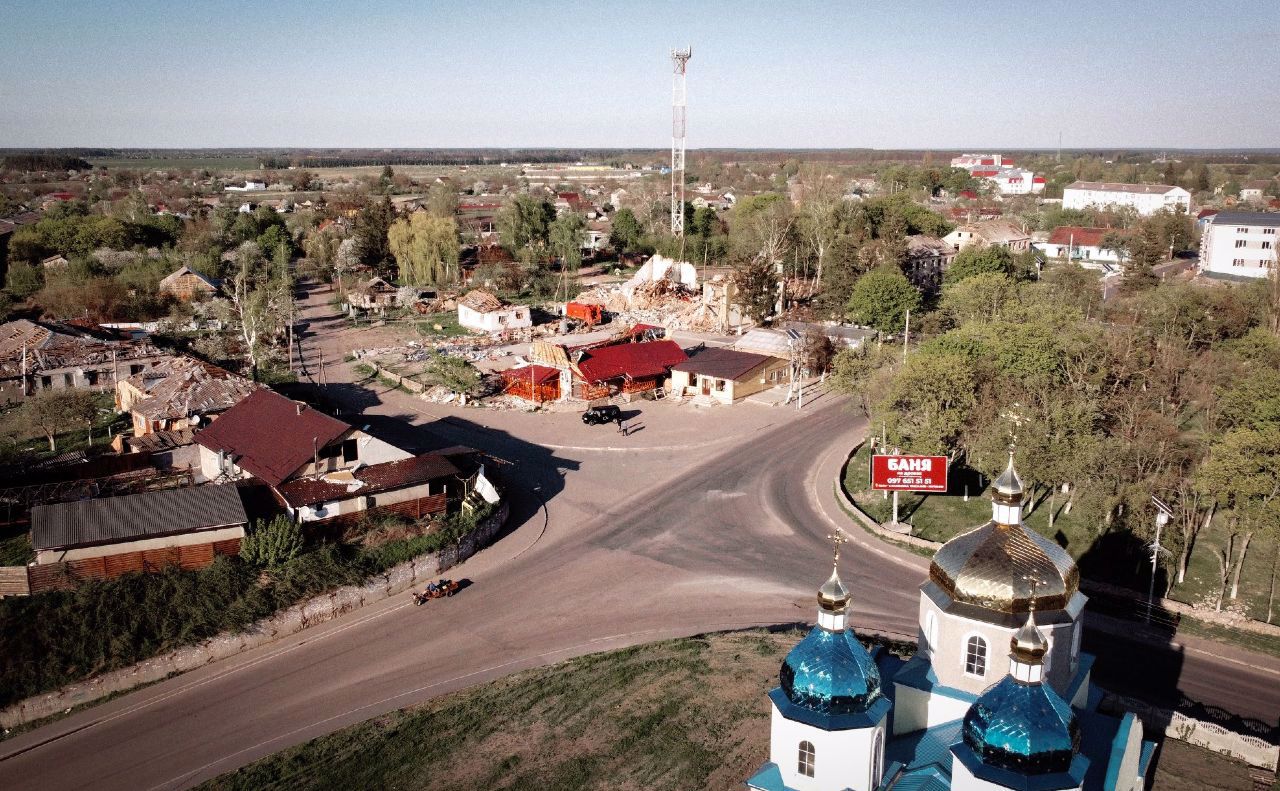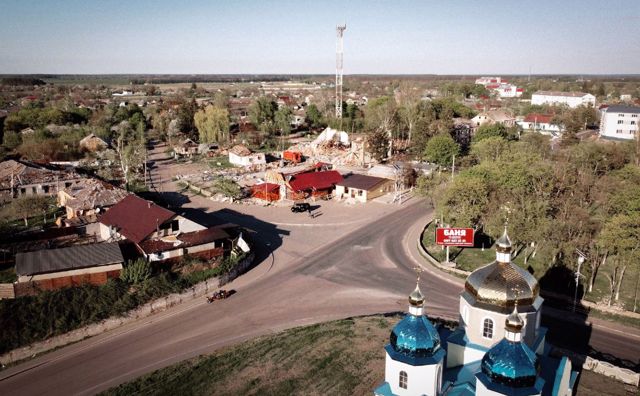Functional temporarily unavailable
General information about Byshiv
The village of Byshiv on the Lupa River is located 50 kilometers southwest of Kyiv, between Fastiv and Makariv. Administratively, it is part of the Fastiv district of the Kyiv region.
The emergence of an ancient Rus settlement on the site of modern Byshiv dates back to the time of the construction of the Serpent's Walls, when it became part of the Irpin-Zdvizh line of defense of the Kyiv land.
The revival of the settlement after the Mongol-Tatar invasion began at the end of the 15th century, when it belonged to the ancient Poloz family. In documents, the name of Byshiv first appears in 1509. In the 16th and 17th centuries, Byshiv was owned by the Polish nobles of Harlinskyi. During the time of the Kozachchyna, Byshiv was a hundredth town of the Bila Tserkva regiment, the ...
The village of Byshiv on the Lupa River is located 50 kilometers southwest of Kyiv, between Fastiv and Makariv. Administratively, it is part of the Fastiv district of the Kyiv region.
The emergence of an ancient Rus settlement on the site of modern Byshiv dates back to the time of the construction of the Serpent's Walls, when it became part of the Irpin-Zdvizh line of defense of the Kyiv land.
The revival of the settlement after the Mongol-Tatar invasion began at the end of the 15th century, when it belonged to the ancient Poloz family. In documents, the name of Byshiv first appears in 1509. In the 16th and 17th centuries, Byshiv was owned by the Polish nobles of Harlinskyi. During the time of the Kozachchyna, Byshiv was a hundredth town of the Bila Tserkva regiment, then it was part of the estates of the Vyhovskyi and Teterya hetmans, but later it returned to the Harlinskyi.
In 1775, the Polish king Stanislav Avhust Ponyatovskyi granted Byshiv the status of a town, fairs were regularly held here. In the second half of the 19th century, Byshiv became the center of the parish.
During the Ukrainian revolution, the government in the town changed many times. The Holodomor of 1932-1933 claimed the lives of one and a half thousand Bishiv residents. During the Second World War, the OUN underground organization operated in Byshiv.
Among the architectural monuments, the buildings of the hospital (end of the 19th century), the Zemstvo school (1909), the administrative building (second half of the 1930s), the remains of the hillfort and the Serpent's Wall have been preserved.
In March 2022, the village of Byshiv was damaged by a Russian missile attack.
Село Бишів на річці Лупа розташоване за 50 кілометрів на південний захід від Києва, між Фастовом і Макаровим. Адміністративно входить до складу Фастівського району Київської області.
Виникнення давньоруського поселення на місці сучасного Бишева припадає на час спорудження Змієвих валів, коли воно стало частиною Ірпінсько-Здвижівської лінії оборони Київської землі.
Відродження поселення після монголо-татарської навали почалося наприкінці XV століття, коли воно належало старовинному роду Полозів. У документах назва Бишева вперше зустрічається у 1509 році. У XVI-XVII століттях Бишів перебував у власності польських шляхтичів Харлінських. За часів Козаччини Бишів був сотенним містечком Білоцерківського полку, потім входив до маєтностей гетьманів Виговського і Тетері, але згодом п ...
Село Бишів на річці Лупа розташоване за 50 кілометрів на південний захід від Києва, між Фастовом і Макаровим. Адміністративно входить до складу Фастівського району Київської області.
Виникнення давньоруського поселення на місці сучасного Бишева припадає на час спорудження Змієвих валів, коли воно стало частиною Ірпінсько-Здвижівської лінії оборони Київської землі.
Відродження поселення після монголо-татарської навали почалося наприкінці XV століття, коли воно належало старовинному роду Полозів. У документах назва Бишева вперше зустрічається у 1509 році. У XVI-XVII століттях Бишів перебував у власності польських шляхтичів Харлінських. За часів Козаччини Бишів був сотенним містечком Білоцерківського полку, потім входив до маєтностей гетьманів Виговського і Тетері, але згодом повернувся до Харленських.
У 1775 році польський король Станіслав Август Понятовський надав Бишеву статус містечка, тут регулярно проводилися ярмарки. У другій половині XIX століття Бишів став волосним центром.
Під час Української революції влада у містечку багато разів змінювалася. Голодомор 1932-1933 років забрав життя півтори тисячі бишівців. У роки Другої світової війни у Бишеві діяла підпільна організація ОУН.
Серед пам'яток архітектури збереглися будівлі лікарні (кінець XIX століття), земського училища (1909 рік), адміністративний будинок (друга половина 1930-х років), залишки городища та Змієвих валів.
У березні 2022 року село Бишів постраждало внаслідок російського ракетного удару.
Сплануй своє перебування у Byshiv
What to see and where to go in Byshiv
Tourist attractions and museums of Byshiv

Byshiv Historical and Local Lore Museum
Museum / gallery
The Byshiv exemplary museum of history and local lore was founded in 1983 by Valeriy Obukhivskyi, a history teacher at the Byshiv secondary school. It is located in the premises of the Byshiv Academic Lyceum.
The museum's collections include up to 1,500 exhibits, which are organized by sections: archaeological, medieval, ethnographic, the first half of the 20th century, the Second World War, socio-economic development of the village in 1950–1990, and the present.
Reviews Byshiv
Geographical information about Byshiv
| {{itemKey}} | {{itemValue}} |
|---|---|
| Region |
Kyiv |




